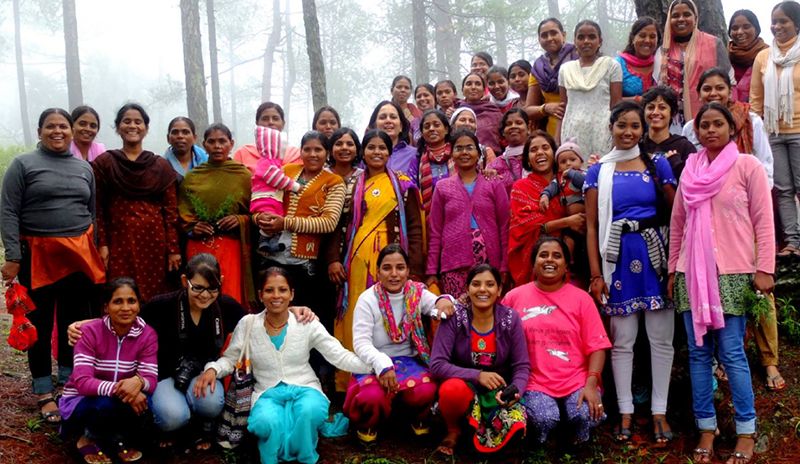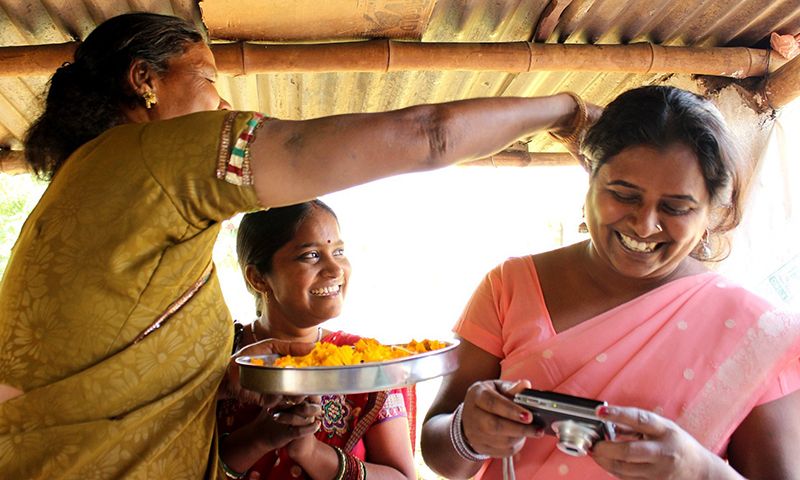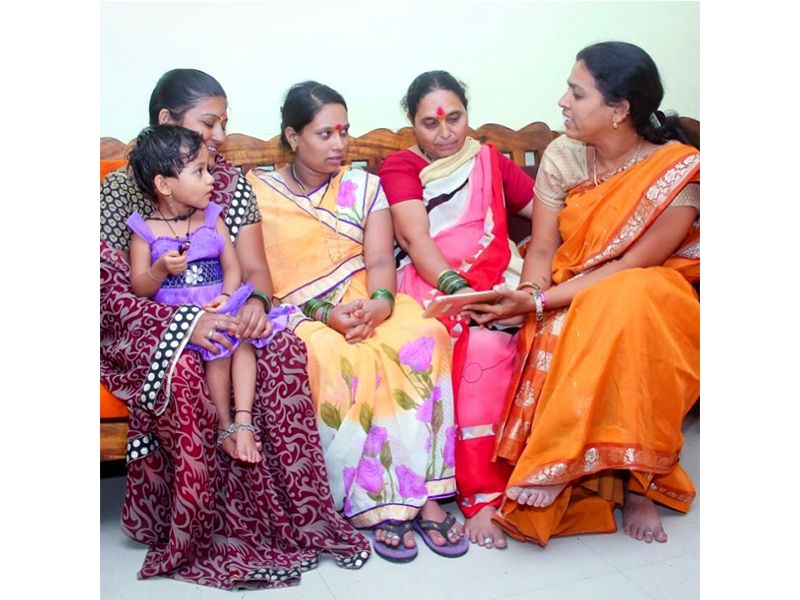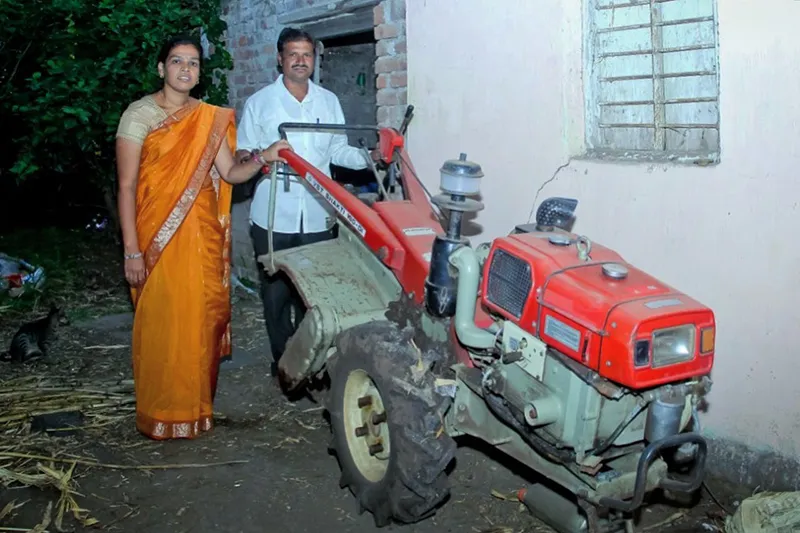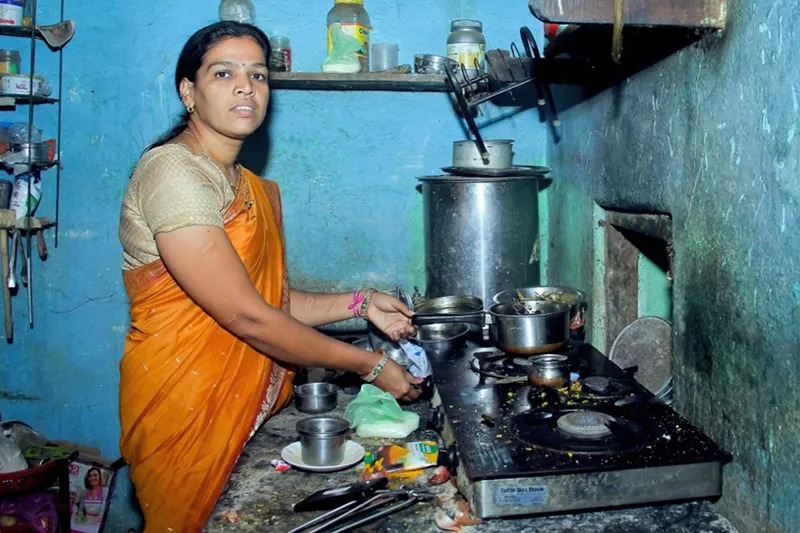The Intrepid Teachers Bringing Internet Access To Women In Rural India
The gender disparity among internet users in the country’s small villages is staggering. A program called Internet Saathi aims to help
/https://tf-cmsv2-smithsonianmag-media.s3.amazonaws.com/filer/f6/a5/f6a502db-2d85-4c22-9012-633eb4d40e79/manasi_in_her_farm.jpg)
On Nov 8, 2016, the largest denominations of currency in India, notes of 500 and 1,000 rupees, were demonetized. Overnight, in a country where over 95 percent of all transactions involve cash, people were left scrambling to deposit their useless notes and replace them with any legal tender remaining at banks. If the situation was bad in urban India, in rural India, it was devastating.
In Nandgaon, a village of only 2,000 residents tucked in the hills of Maharashtra’s Satara district, Jyoti Gadekar was rushed to a hospital for an emergency C-section. Her extended family had collected the 10,000 rupees, around 156 USD, required upfront for such a procedure and deposited it in the bank. Suddenly, it couldn’t be reached. The bank would take too long to transfer the amount and ATMs only allowed 2,000 rupees to be withdrawn per day to keep up with demand.
That’s when her family approached a woman known in the village for her resourcefulness: Manasi Kulkarni.
Nandgaon is not too different from the rest of rural India. Smartphone use has skyrocketed in the last few years, with early generation Android devices selling for as little as 2,000 rupees, around 30 USD. Internet use on smartphones is growing exponentially too, with unlimited browsing packages becoming cheaper in a highly competitive market. “Men here don’t let their wives use their phones. You’ll break it, they tell us, and what use do you have for it anyway?” Manasi says. Indeed, only 12 percent of rural India’s internet users are women.
Manasi, a 32-year-old mother of two, only started to use the internet in August last year. Manasi describes the fifteen years prior to that as being filled with fear. Manasi worked as a teacher for 2-4 year olds in the small city of Kolhapur before moving to Nandgaon after marriage. She wanted to find a way to help her community but felt afraid she would never find an outlet.
Manasi finally went online through Internet Saathi, a Google and Tata Trusts program. When the program was advertised, she hesitated to even apply, it was her teenaged kids who insisted that she must. Through this program, key women in villages across India are taught to use the internet and given access to smartphones of their own. These women assume the role of a Saathi—a companion—and teach other women in their villages to use the internet, too.
Manasi had spent the three months since becoming a Saathi, teaching women to find information on the skills that interested them. “If I saw a woman has a small tailoring business, I’d show her tutorials on YouTube and new patterns on Google. If she loves to cook, we’d look up recipes. For a woman who tends to chickens, I’d share information on how to treat them better,” Manasi recalls. And slowly, these women would see the internet as approachable, rather than daunting, and useful to themselves, not just their husbands.
On that day post-demonetization, Manasi’s challenge was unlike any she’d faced. With a woman in a complicated labor and a doctor refusing to treat her without upfront payment, she found an app, Paytm, that could transfer money from the family’s bank account directly to the doctor’s. This, in a village where online banking was unheard of.
Five hours later, a healthy baby girl was born.
For Manasi, the experience opened her eyes to a new world. While the internet could be used to learn skills and share photos, it could also be used to save a life.
The next billion users to join the internet will come from India and Africa. In India, presently only 26 percent of the population has regular access to the internet. This is expected to more than double from 330 million to 730 million by 2020. The majority of these new users are joining from rural India, where presently only 17 percent of the population is online. This growth is fueled by programs like Google’s Free WiFi initiative, Internet Saathi, and the Indian government’s own efforts to connect villages with optic cables.
In another rural region, Bundelkhand, in north India, there is little to no presence of Internet Saathi or similar digital literacy programs. Here, a hyperlocal newspaper, Khabar Lahariya, caters to villages that often have no other source for news. Their newsroom is all-female, with reporters who are recruited from the communities they cover, several of whom are also from low-caste and marginalized backgrounds. These women are newly literate and, as of last year, newly trained in smartphone and internet use.
One of these women is Kavita, who was married at the age of 12 and fought for her right to study against a culture that had prescribed a very different life for her. She was the oldest person to enroll in 5th grade shortly after marriage. Now, she has a masters degree and is the founder and digital head of Khabar Lahariya. Kavita, like the majority of Khabar Lahariya’s reporters, goes only by her first name; last names are too revealing of their backgrounds and lead to discrimination within the society.
“We noticed that even though people in Bundelkhand weren’t well-educated, often only until 5th grade or high school, smartphone use among them was increasing. Every house has a phone,” says Kavita.
“The world of the internet is growing,” Kavita says, and realizing the impact it’d have on Khabar Lahariya’s reporting and reach, Kavita and her team ditched their print newspaper entirely and moved to digital. “We first hired a trainer to teach us to use smartphones for filming news segments, scripting, and sharing our reports with the team,” and since then, the veterans train the new journalists on staff. Their reports are distributed to their audience through WhatsApp, YouTube and Facebook. Since this move, more women are tuning into Khabar Lahariya for their news than ever before. Over 30 percent of their readership comprises women and young people, when previously only literate and elderly men read the print edition.
Despite the ongoing cultural tension that comes with the adoption of the internet among Khabar Lahariya’s journalists, it has granted them more freedom and power than they’ve ever had.
Rural India also has one of the worst gender disparities among internet users in the world. Women face immense cultural barriers to access the internet. In turn, the internet breaks immense barriers for them.
Generally, it is the men who own and control the gateways to the internet, their low-cost Android smartphones. In Nandgaon, Manasi finds that sometimes men put up the barriers to the internet, not out of malice but ignorance.
In the last year, Manasi has taught around 1,000 women in her district’s villages to use the internet. She reckons she’s taught 200 men, too.
“Getting women online isn’t just about teaching them to use a smartphone. It’s about changing women’s thinking and men’s thinking,” Manasi says. When a farmer in her village refused to let his wife learn to use the internet, Manasi went to him armed with a search engine. “I told him, your crop is not doing well, here, let me find out how to fix it.” As his crop started to get healthier in the following weeks, he started to realize that a phone in the hands of a woman empowers not only her, but her family, too.
In the weeks after the emergency Caesarian, Manasi challenged herself to find more and more profound ways to improve the lives of women in her village.
There had been an uptick in the number of women-owned small businesses in her district. More women were improving their crafts, particularly tailoring and production of preserved foods, but, as always, sales were limited by geography. Nandgaon is in a fairly well-connected district, not too far from a national highway, but historically there has never been a distribution network for such goods. If sales come, they’re only from someone known to the seller. So stocks had started to pile up and money was not trickling in.
But Manasi had a new network now, “my internet family, as I call it”, she says. The women whom she’d taught had, in turn, taught others in neighboring districts, spread out over a few hundred miles. So they set up a WhatsApp group. WhatsApp is the world’s largest app for peer-to-peer texting and communication. These women used it in a novel way, for village-to-village communication. Now, if a woman in their villages has, say, a dress she can produce, she pulls up a photo of the design from Google and sends it to the group. Women share her query with potential customers in their entire village, and the orders come rolling in. Only once orders have arrived does the production begin.
This way, Manasi says women have tripled their incomes in the last few months. Her own small business of crisp snacks and pickles, which employs 14 women, has taken off. Their snacks sell anywhere within a 150 mile radius, and a new order is just a WhatsApp query away.
“My wish is to improve women’s lives in every way,” Manasi says. Financial independence is just the start.
India is often thought of as a country of contradictions. There’s the India that grows its economy, then there’s the India with extreme income inequality. One India shows its girls they can grow up to be president, the other India doesn’t ensure their rights to education and safety. While one India scrappily builds a better tomorrow, the other India clings to its past.
It is incorrect to assume that the India reaching toward its future is urban India, and the India clinging to its roots is rural. Modernity and scarcity coexist in rural India too. And there is a remarkable diversity of mindsets throughout the country.
India is increasing its GDP by 7 percent a year, but rural communities such as Nandgaon remain on the periphery of India’s remarkable growth effort. This farming community is dependent on fickle weather in a time of climate change. Manasi’s husband, Milind, is a soybean farmer. Nandgaon experienced the first rains of the season in mid-July, two weeks later than the norm. “I don’t know if we’ll make it this year,” he says, but he and Manasi remain adamant that they’ll find a way. “Our salary is our children’s education,” Manasi says, and she ensures that her teenage daughter and son attend a good school, even if it’s 30 miles away by public bus.
This is the context in which this the greatest learning tool of the century, the internet, is making its entry.
When Facebook was planning to launch its Free Basics program in 2015, it offered a free but censored internet to people in communities like Nandgaon and Bundelkhand. Only around a dozen websites chosen by Facebook would be accessible, and the rest of the internet would be cordoned off. While Free Basics was widely advertised as being a philanthropic effort to get rural India online, it was by a for-profit company that had more to gain than the people it was targeting.
Khabar Lahariya ran an in-house survey last year where it found that in farming communities like Bundelkhand, people weren’t just using the internet, they were tailoring it to their needs. Voice search is their entryway to the internet, and the services that were most useful to people were YouTube, a service run by Facebook's competitor, Google, that people relied on for tutorials, and government websites for crucial information that couldn’t have been accessed otherwise. Kavita remarks that Free Basics was “a bad idea, how could it be a good one. For people here, YouTube is a must, news on the government and its services is crucial. Free Basics blocked these.”
In return for its Free Basics service, Facebook would find its next few hundred million users, collect marketable data on them, and establish an overwhelming dominance in the digital space. Free Basics was publicly debated until it was banned by India’s telecom regulatory authority in 2016. Before its arrival into India’s digital shores, rural communities had already been experiencing high growth of smartphone and internet use. This hasn’t changed since it was turned away. In attempting to decide for these users how and where they could surf the web, Facebook took a misstep.
It is the inventive use of simple tools that Manasi finds have greatest impact for her community in Nandgaon.
“Buying power is reducing in our communities. By 2030, we’ll have a hard time affording anything,” Manasi says. National pension programs for farmers and daily wagers exist but perhaps because of low awareness or the uncertainty of making deposits for decades before any return is seen, they remain unused.
No farmer in Maharashtra’s Satara district, of which Nandgaon is a part, has had pension in generations. As for the farmers’ wives? “Our incomes have tripled since we started selling through WhatsApp. So suppose we earn 3000 rupees [50 USD] per month, a third of it goes to the husband’s drinking habit, a third to the kids’ education, the rest for household expenses. We are left with nothing for ourselves,” Manasi says.
“Old age happens to everyone, so why not pension?”
In January, Manasi found the government’s website for the National Pension System. The program enables workers in the unorganized sector, of which farmers and laborers are a part, to reliably deposit a small amount every month, with a healthy interest rate of around 12 percent assured by the government and selected fund managers. With a change made by government in 2015, this pension would be available in a decade, not just at 60 years of age.
Manasi found 32 YouTube clips that simply explained the benefits of pension and the NPS service and downloaded them for offline viewing using one of India’s most popular apps, MX Player. Then, she started showing the playlist to every farmer and farmer’s wife she met, on buses, farms and in organized workshops.
In six months, she has signed 350 people from her district, including 200 women, on the pension program. Liaising with the local government, she’s started a scheme through which any woman who signs up others in her community gets a small cut from the government. Now, the pension drive is gaining steam.
Through the combined efforts of Manasi and women in these communities, change is coming to rural India.
***
Pornima Gurav, a 19-year-old from the nearby Ond village, was inspired by Manasi’s example and joined the Internet Saathi program shortly after her, in September last year. Since then, Pornima has taught another thousand people in her school and district to use the internet. “There are no other ways to learn to use the internet here,” Pornima says. Schools teach typing on decade-old desktop computers, but to learn about the internet and from the internet, “we lean on each other.”
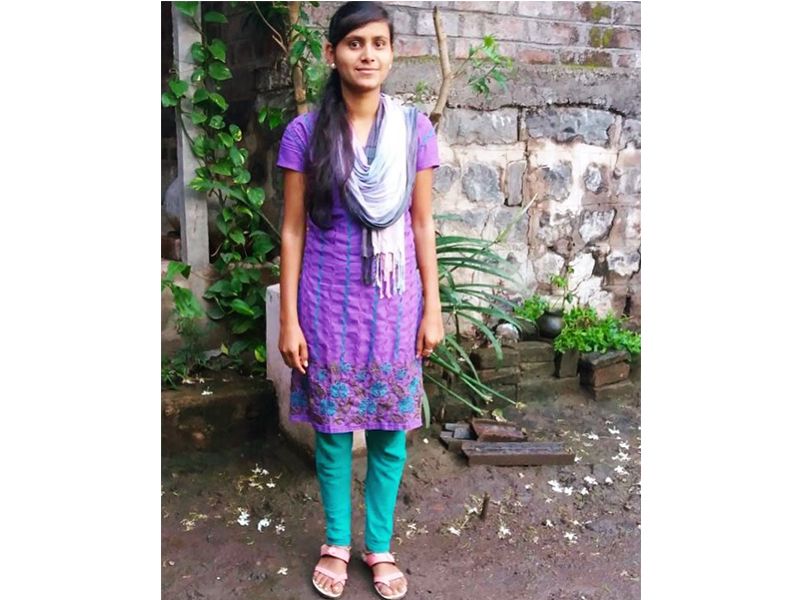
Pornima comes from a family of peanut farmers and never envisioned a life of teaching, or any work at all after marriage. In the last few months, she’s taught women in Ond about hygiene and pregnancy-related issues through YouTube clips and Google voice searches. Pornima will likely be married soon but she says, “I’ve told everybody, I will continue to work even after I’m married. I just want to keep teaching and teaching until we all know to use the internet.”
So far, Internet Saathi has trained 26,000 Saathis, who have gone on to reach an estimated 10 million other women in 100,000 villages. Ten million may seem like a drop in the bucket of the total number of users who have joined the internet from rural India in the same time frame. User growth is only incidental to the goal of the program: to promote the use of this technology among a group that is routinely prevented from accessing it.
India’s digital literacy movement continues to gain steam. Any effort that brings more people, especially the marginalized, onboard the internet and empowers them to use it to match their needs, is worthwhile. After all, the internet is so powerful, in places like Bundelkhand, it can even turn some women into reporters.
Kavita describes the field of journalism in Bundelkhand as being “a stockpile of men. People used to think of women as soft-hearted, that they can’t do this work”. Khabar Lahariya’s reporters have to be tough, often rebelling against society and their own families to do this work, but the internet has given them a greater potential for impact and a new identity.
Across the country, Manasi has had a similar experience. “We used to spend our entire lives in housework,” Manasi says, “We never lived for ourselves.” Since going online, Manasi has found a new direction in life. Manasi wants to improve the lives of women in her district’s villages in every way.
The internet’s just the tool for the job.


